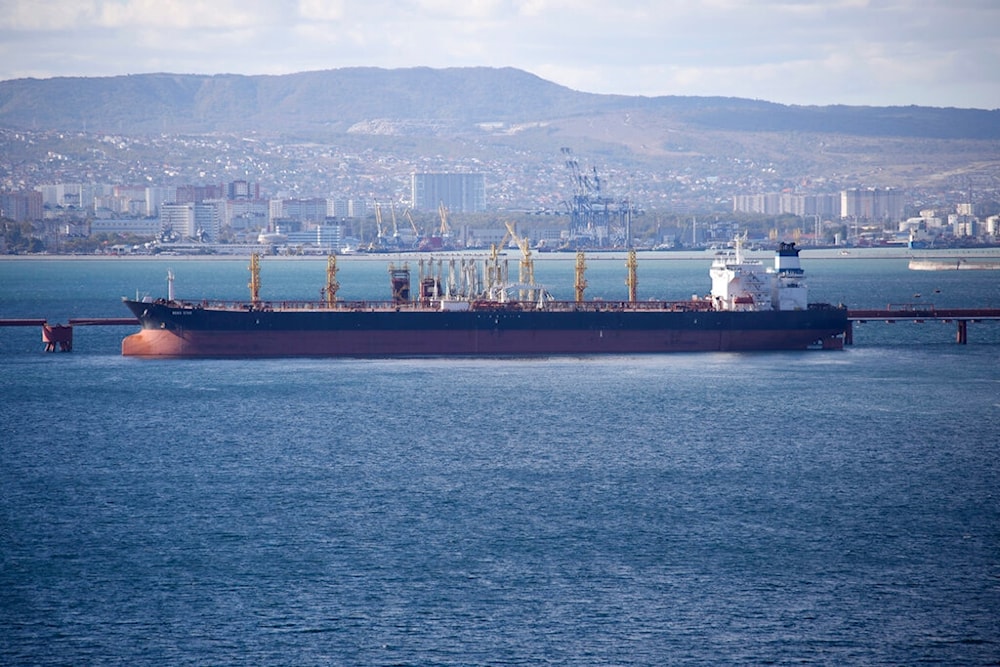OPEC+ members agree to extend Q1 oil production cuts to Q2
Russia said it plans to further decrease its oil production and exports by a total of 471,000 barrels per day in Q2
-

An oil tanker is moored at the Sheskharis complex, part of Chernomortransneft JSC, a subsidiary of Transneft PJSC, in Novorossiysk, Russia, on Oct. 11, 2022. (AP)
Amid heightened geopolitical tensions, OPEC and its allies, led by Russia (OPEC+), have agreed to prolong voluntary oil output cuts originally slated for the first quarter into the second, sources informed Reuters.
Moments ago, Algeria issued a statement declaring its intention to prolong its voluntary reduction in oil production by 51 thousand barrels per day until the end of June.
Oman likewise stated its decision to decrease oil production by 42 thousand barrels per day for the second quarter of the year.
Saudi Arabia stated that the country plans to maintain its oil output at approximately 9 million barrels per day through June and that the decision to extend production cuts is aimed at supporting the stability of the oil market.
Russia said it plans to further decrease its oil production and exports by a total of 471,000 barrels per day in Q2, the UAE said it agreed to reduce its oil output by 163,000 bpd for Q2, and Iraq's Oil Minister has confirmed the country's intention to extend its voluntary output cut into Q2.
Price stabilization
The agreement, which initially took effect in November 2023, involved voluntary production cuts totaling approximately 2.2 million barrels per day (bpd) for the first quarter, with Saudi Arabia assuming the lead by extending its voluntary cuts.
According to the report, these efforts are intended to counter the rising output from the US and other non-member producers. They also aim to address concerns regarding demand fluctuations amidst prevailing high-interest rates in major economies.
It further states that oil prices have been influenced by two contrasting factors, namely the current crisis in the Red Sea, and concerns about economic growth and high interest rates.
On Tuesday, the trading price of Brent crude oil hovered at $83 per barrel.
Read more: US, G7 to explore appropriation of Russia's $200+ bln in 2024: FT
Cuts in oil production have historically been standard practice among oil-producing economies and are primarily aimed at stabilizing oil prices, particularly during periods of heightened geopolitical tensions.
In the context of the current geopolitical climate, OPEC began implementing cuts since the fall of 2022.
By stabilizing prices, Russia hopes to counter the negative impact of G7 price caps on its energy sector.
Recent increases in production cuts coincide with global economic uncertainty, as many central banks respond to inflationary pressures by raising interest rates.
These measures are viewed as a potential hinderance for economic growth by OPEC members, consequently prompting adjustments in oil production.
Despite being the world's largest oil producer, the United States primarily exports much of its domestic output. Instead, it imports oil that is challenging to refine but aligns well with its refinery capabilities.
The US Energy Information Administration announced in January that weekly oil production in the United States reached 13.2 million barrels per day.

 3 Min Read
3 Min Read








